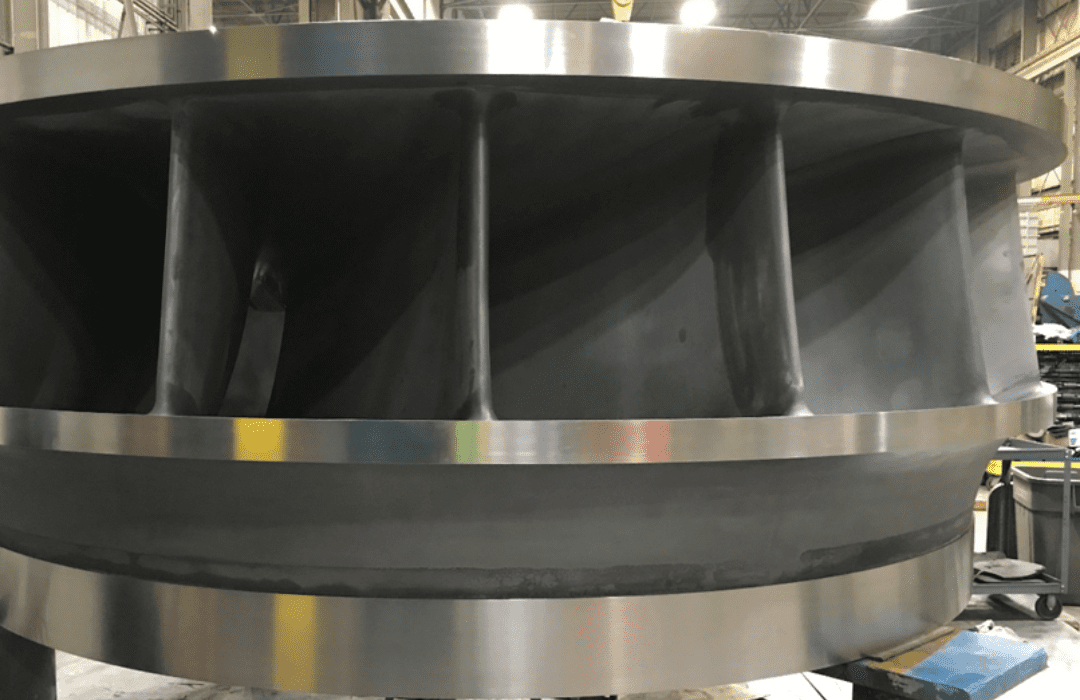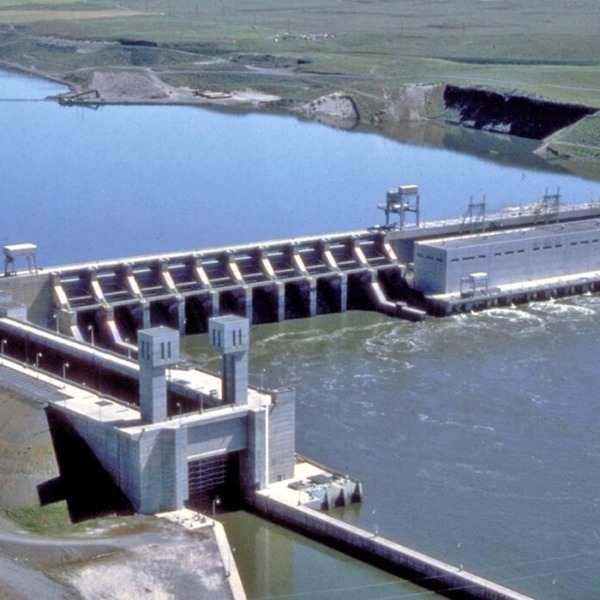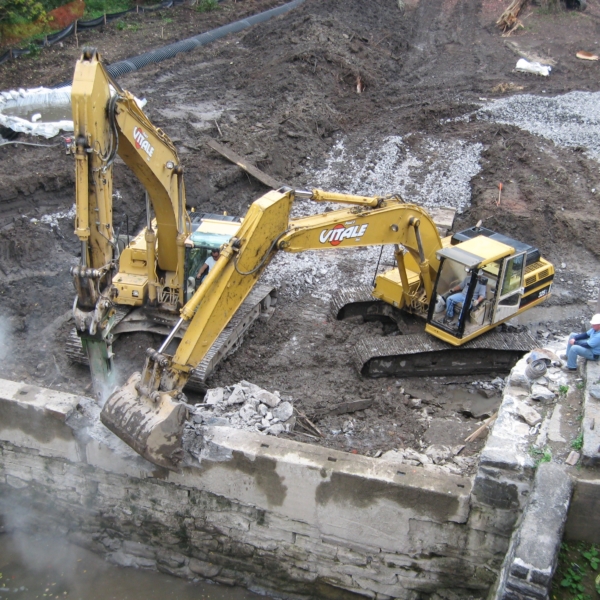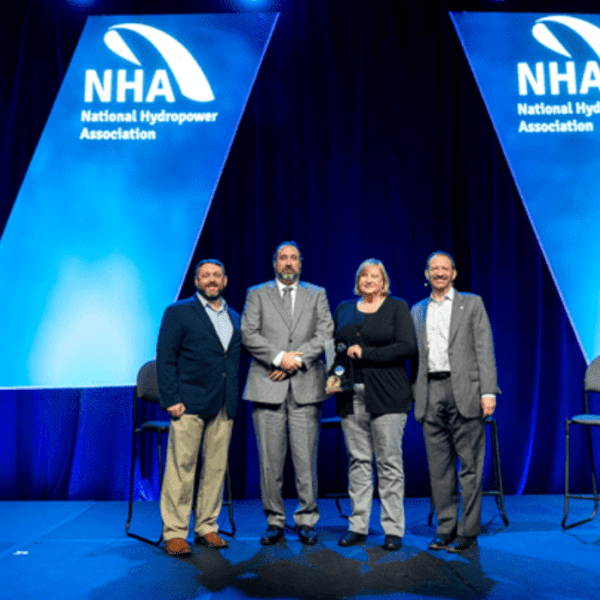*Sponsored Content
In 2010, American Hydro designed and model tested a low, specific speed Francis runner. The model met the requirements of the specification, and the model was accepted. The prototype runner was then installed and commissioned in 2011.
After some time in operation, it was discovered that the head losses in the long and complex penstock system were overestimated in the original specification carrying through to the design and model testing phase.
During normal operation, the prototype turbine saw significantly higher net head than the maximum net head used in the design. This resulted in unfavorable inlet conditions at the runner blades, leading to inlet edge cavitation.
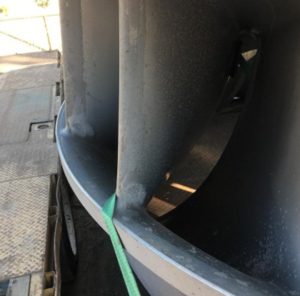
Figure 1: Inlet edge cavitation damage
Figure 1 shows the blade inlet edge cavitation damage in the runner before modifications. The damage is relatively minor, but occurred within a short lifetime, requiring annual repair.
American Hydro explored several options to improve this cavitation performance, ranging from minor reprofiling at the blade inlet edge to complete blade and/or runner replacement.
Since the runner was recently replaced, it did not make economic sense to manufacture new runners. However, CFD of the runner showed that minor re-profiling by welding and grinding to templates would only partially address the inlet edge cavitation.
Ultimately, American Hydro designed a modification to the blades so that the majority of the blade was left as designed, but the first 18 inches were removed and replaced by a new cast blade segment with an inlet profile designed for the higher net head.
Figure 2 shows a comparison of the modified design (blue) to the original design (red). The modified inlet edge has substantially higher inlet edge angles, which eliminate the inlet edge cavitation by better aligning with the flow at the maximum head.
A comparison of the pressure contours on the original blade profile vs. the modified blade profile can be seen in Figure 3. Areas shown in white represent the potential for cavitation.
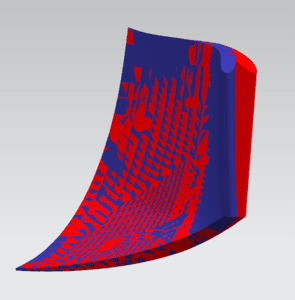
Figure 2: Comparison of modified design (blue) to original design (red)
Following the analysis and design, the runner was returned to American Hydro’s manufacturing facility in York, Pennsylvania. The runner was cleaned and inspected, and then prepared for modification.
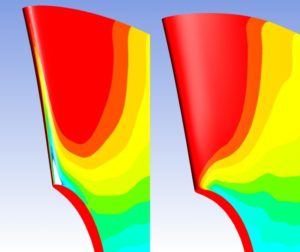
Figure 3: Pressure contours at maximum power, maximum net head (the original blade shape is on left and modified blade shape is on right)
Taking care to preserve the remaining blade shape, the original inlet section of each blade was removed by robotic plasma cutting. The new cast inserts were positioned into the runner and welded in place.
Figure 4 shows the rough cutting to remove the existing blade inlet.
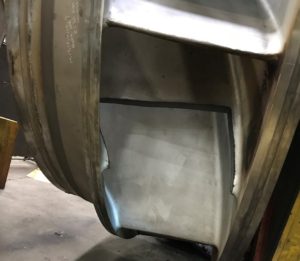
Figure 4: Rough cut blade inlet edge removal
Figure 5 shows the new cast inserts.
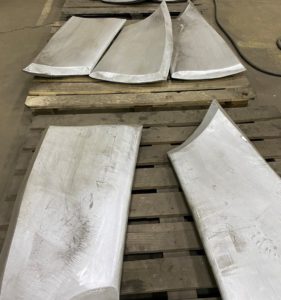
Figure 5: New cast blade inserts ready for installation
Figure 6 shows the insert installed and welded, but before grinding to blend with the surrounding surfaces. This modification used equivalent materials and welding procedures to the fabrication of a new runner, assuring that no compromises were made to the structure of the runner. Once installed, the new inserts blended seamlessly into the original blade shape.
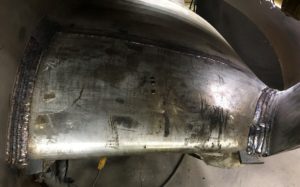
Figure 6: Blade insert welded before grinding to blend
Figure 7 shows the completed modification to the runner blades.
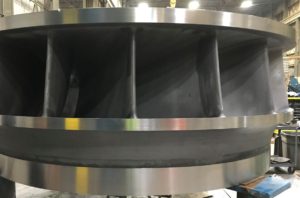
Figure 7: Completed runner blade inlet modification
After the blade modification and re-machining to critical interface surfaces, the runner was reinstalled and index tested. The index test showed that the unit performs as expected, and the modification had no detrimental effect on the unit’s relative efficiency or power output.
After approximately 800 hours of operation, the unit was dewatered and inspected for cavitation damage. No inlet edge cavitation damage was found at this inspection, where before the modification, significant pitting would have been expected in this timeframe. No issues have been reported after over a year of operation post-modification, and American Hydro is currently performing the same modification to a second runner.



